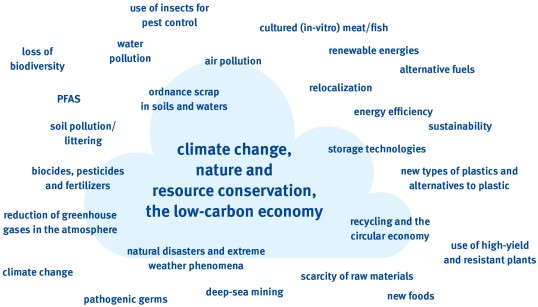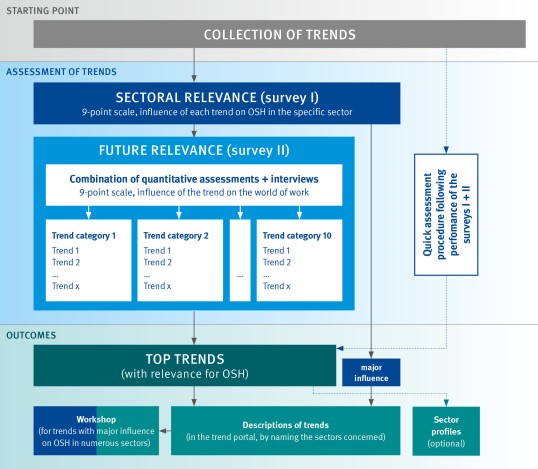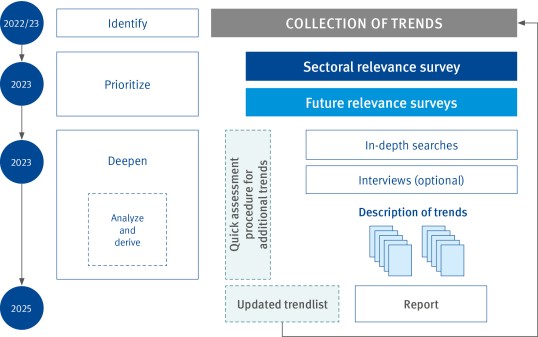- Artificial Intelligence (AI)
- Occupational exposure limit values
- Climate Change and Occupational Safety
- List of CMR substances
- Electromagnetic fields
- Ergonomics
- Industrial Security
- Collaborative robots
- Noise
- Nanoparticles at the workplace
- Optical Radiation
- REACH
- Reference materials
- Proficiency testing
- Vibration
- Virtual reality
- Work 4.0
Methodology of the Risk Observatory
The Risk Observatory aims to identify, swiftly, changes that will impact upon the world of work, institutes of higher education, schools and children's daycare centres. What developments are set to change the world of work and education for insured persons over the next five to ten years, and where, how and to what extent? What do these changes mean for the prevention of occupational accidents, occupational diseases and work-related health hazards? Where are particular prevention efforts required, and what form could they take?
The Risk Observatory supports proactive prevention activity by the German Social Accident Insurance Institutions by identifying top trends across and within sectors, i.e. trends that will have a major impact on the safety and health of insured individuals.


